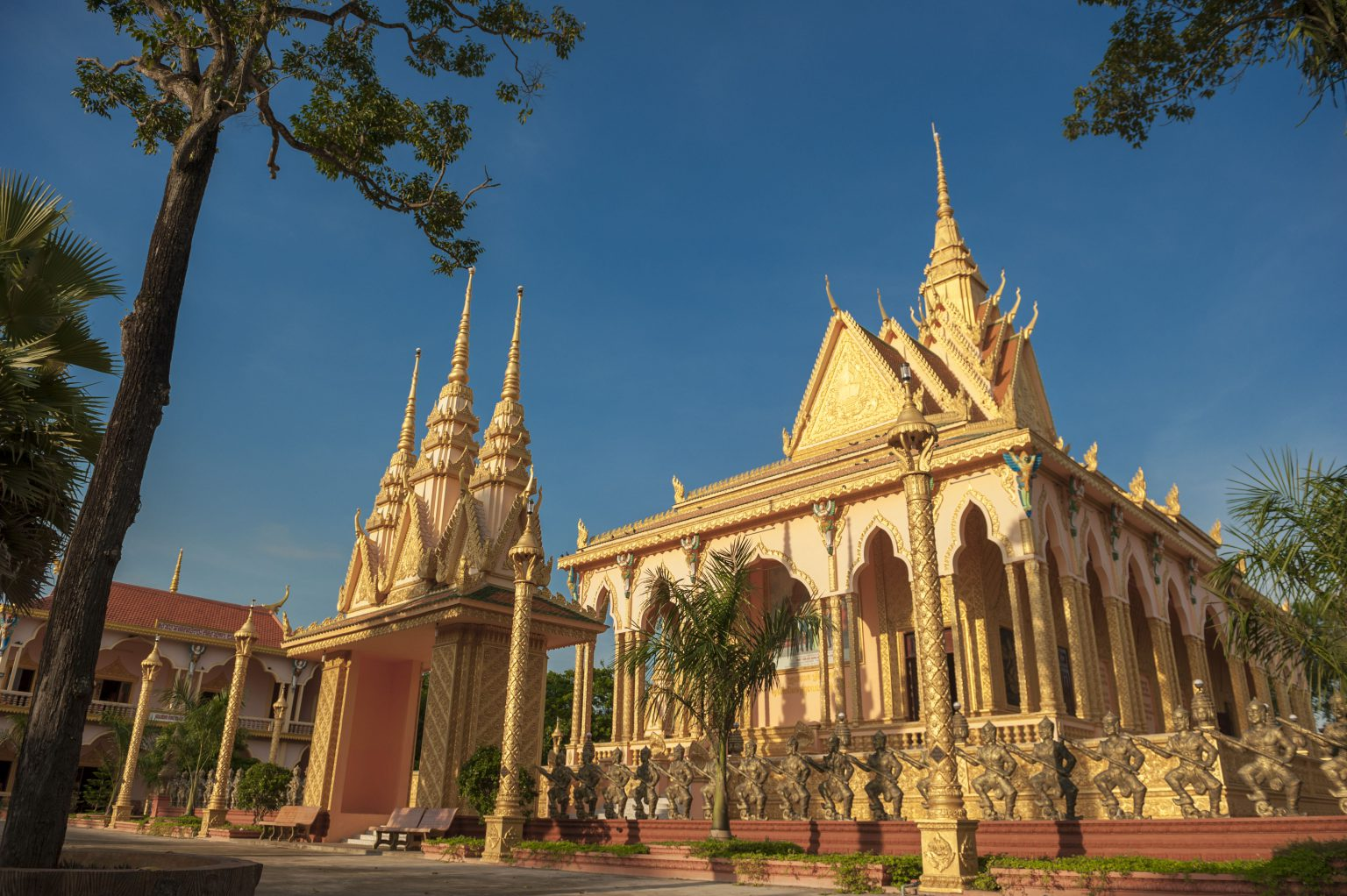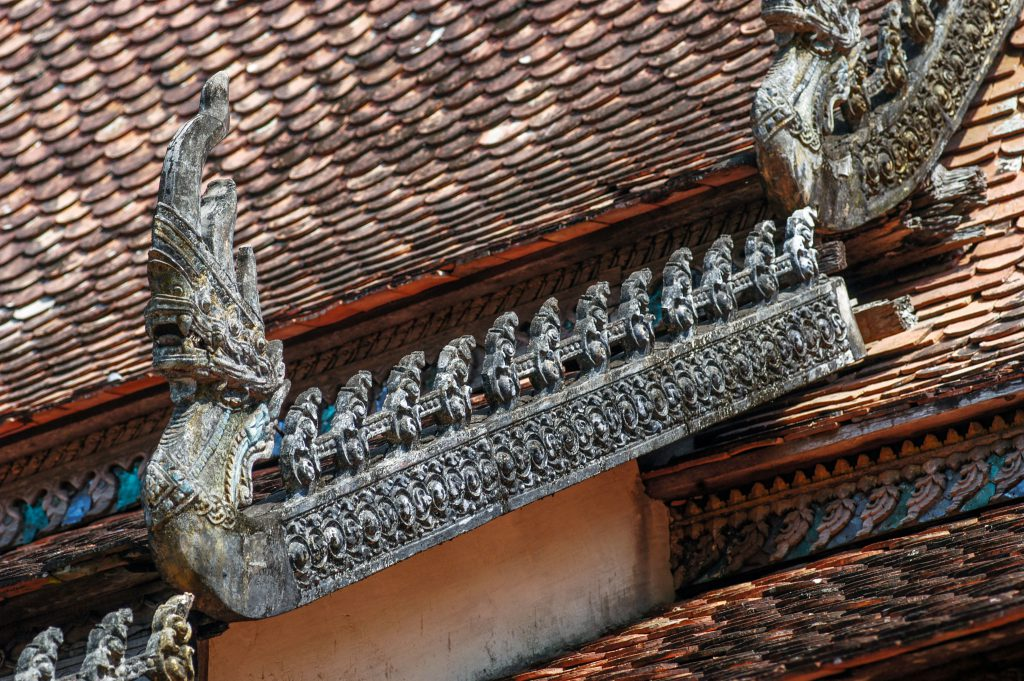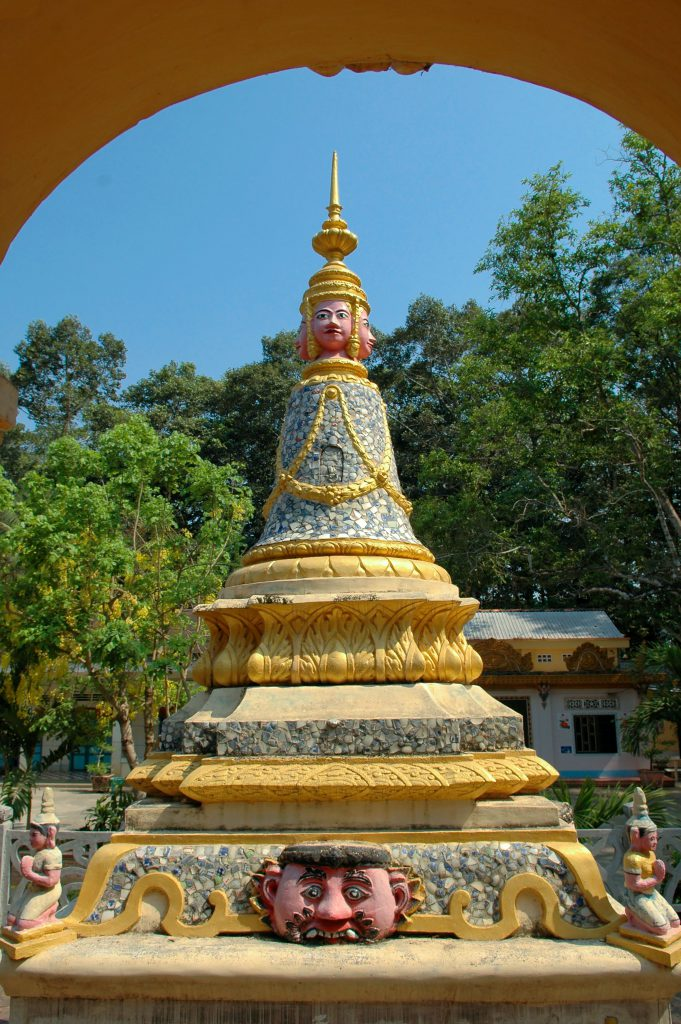
Tra Vinh’s Khmer Pagodas
The Tra Vinh Khmer pagoda system is a one-of-a-kind cultural and artistic work. Almost all Khmer activities, from studying and practicing to community activities and organizing traditional festivals, are associated with the temple roof. Khmer pagodas are a complete set of elements for planning, shaping, architectural, sculpture, and decoration.
 Stork Pagoda has been built and embellished for over 300 years.
Stork Pagoda has been built and embellished for over 300 years.
Soaring pagoda roofs with soft snake-tailed blades swooping down can be found wherever there are Khmer people. It's called a pagoda, but that's probably not enough because the Khmer pagoda also serves as a community cultural house, much like the Vietnamese village or the Central Highlands' Rong dynasty. Almost all Khmer activities take place here, from studying and practicing to traditional festivals like New Year celebrations (Chol Chnam Thmay), moon ceremonies (Ok Om Bok), grandparents ceremonies (Dolta), and so on.
Khmer people are very devout Buddhists who believe that the Buddha is everywhere to protect a peaceful life, so almost everywhere people volunteer to build temples. Tra Vinh is one such place, with over 100 pagodas of various sizes and architectures, but all of which are one-of-a-kind architectural and artistic works. Famous Khmer temples throughout the South can be found in Tra Vinh, including Hang Pagoda in Chau Thanh District, ng Pagoda in Tra Vinh City, Vam Ray Pagoda and Ông Mẹt Pagoda in Tra Cu District...
 Ông Mẹt Pagoda's decorative patterns
Ông Mẹt Pagoda's decorative patterns
Khmer people frequently choose high square land as the location of the pagoda, which is surrounded by forests or rows of oil trees and palm trees, creating an oasis among vast rice fields. A Khmer temple typically consists of the following elements: temple gate, fence wall, main hall, tower, meetinghouse... The main hall, built in the center, is the most important.
Khmer pagodas are a complete set of elements for planning, shaping, architectural, sculpture, and decoration. These elements are closely related and work together to form a unified whole. The Khmer temples are all designed in the shape of an isosceles triangle, with the number 3 being the most important factor. The temple is divided into three layers: the garden, three levels, the corridor, and the main hall. The roof of the pagoda has three levels, each of which is divided into three folds. This principle is deeply ingrained in the Khmer people's Subconscious. As a result, despite numerous restorations or renewals, the temple has remained unchanged over time.
 Âng Pagoda’s roof
Âng Pagoda’s roof
The Khmer people appear to have built the temple not only as a place of worship, but also as a showcase for their art deco skills. The system of statues and reliefs that runs from the wall to the main hall is a distinguishing feature of Khmer temples. Aside from the fine art aspect, the art images on this page are also a treasure trove of Buddhist culture and knowledge. The decoration system, which includes patterned motifs and images, is implicitly oriented toward good accomplishments and honoring the Dharma. The first is that the gods originated in Indian mythology. With the origin of demons such as Reahu (dạ xoa demon), Yeak is often referred to as Chằn, the Naga god snake. These images appear in front of the temple gate or around the main hall to protect the Dharma, but they also convey the message of the Buddha's power to transform evil into good. On the roof's pillars are images of fairies or krud birds, all in the shape of maiden bodies, dressed in traditional Khmer attire, with the power to fly through the wings, spreading dharma throughout the world. Because Khmer people adhere to the Nam Tông Buddhist sect, the main hall altar is quite simple, with only a statue of Shakyamuni placed on the altar and decorated with memories and flowers, but the columns, walls, and ceiling are ornate with Buddha artifacts. Alternatively, the balanced decorative pattern on both sides represents the highest value of wisdom converged in Buddhist scriptures.
 Âng Pagoda's architecture is always in harmony with nature.
Âng Pagoda's architecture is always in harmony with nature.
The image of the temple reflects some of the Khmer people's cultural life, creativity, and unique aesthetic sense. As a result, whenever tourists have the opportunity to visit Tra Vinh, the pagodas have become an appealing destination.
Source: Lê Hoàng - Photos: Amachau